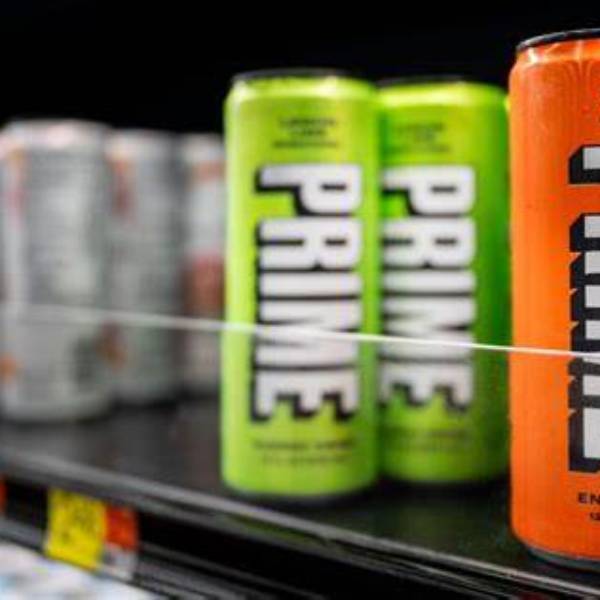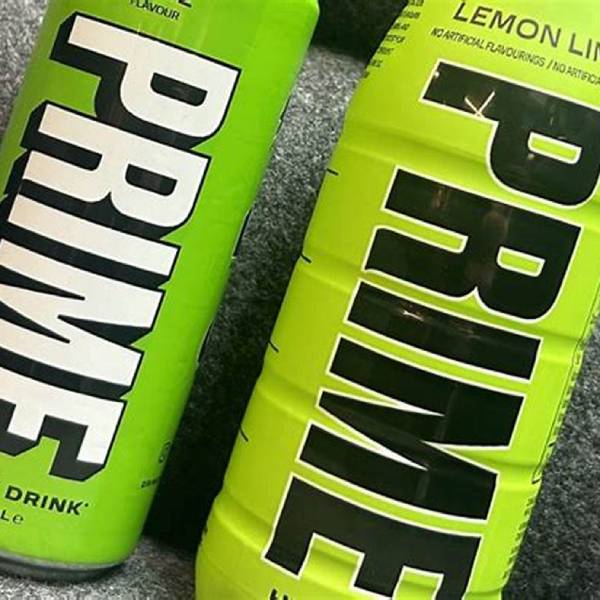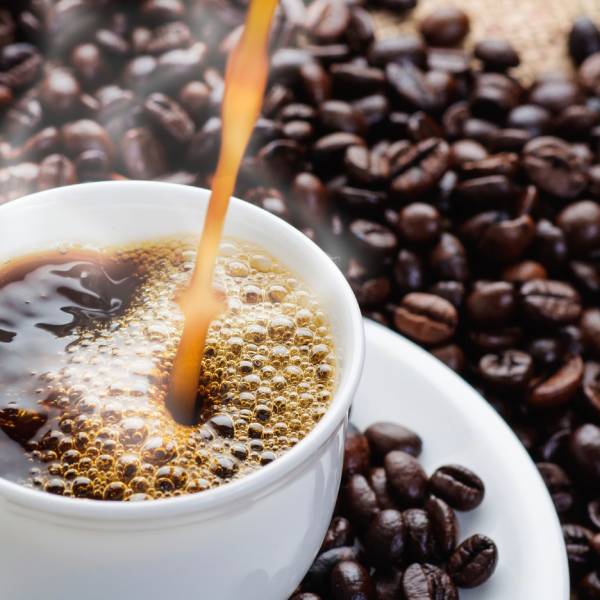Energy drinks have gained popularity among many individuals seeking an energy boost. One brand that stands out is Prime. As consumers become increasingly health-conscious, they often want to know, how much caffeine is in Prime energy drinks? This article explores this question in depth.

Understanding the Caffeine Content
Understanding Caffeine Content
To answer the question, we must examine Prime’s formulations closely. Each flavor of Prime energy drink contains a precise amount of caffeine. On average, consumers find about 200 milligrams of caffeine per 12-ounce can. This amount offers a suitable option for most adults who seek a quick energy boost. Many people use these energy drinks to enhance their focus during workouts or long work hours. Therefore, the caffeine content plays a crucial role in their effectiveness.
Energy Boost and Considerations
While 200 milligrams may work well for many, some individuals might be sensitive to caffeine. For those people, the energy boost can lead to jitters or increased heart rates. Thus, it’s essential to monitor one’s own tolerance levels when choosing Prime. Additionally, combining Prime with other sources of caffeine can lead to excessive consumption.
Therefore, moderation is key to enjoying these drinks safely. Many consumers appreciate the energy and focus that Prime provides, but they should balance their intake. By understanding their personal limits, individuals can make informed choices. Overall, Prime energy drinks offer a convenient way to boost energy and alertness as long as users remain aware of their caffeine intake. This awareness can help prevent any discomfort or side effects associated with overconsumption.
Comparing Caffeine Levels
Caffeine Levels in Prime Energy Drinks

When considering caffeine content, Prime energy drinks offer a noticeable boost. Each serving of Prime contains about 200 milligrams of caffeine, significantly higher than many competitors. This amount gives consumers an extra energy kick, especially when compared to popular brands. For example, Red Bull provides only 80 milligrams per 8.4-ounce can. Since consumers often seek that energy boost, understanding this difference becomes crucial. Additionally, Monster drinks typically contain around 160 milligrams, but they still fall short of Prime’s levels. Consequently, Prime attracts energy drink enthusiasts who desire more caffeine for their activities.
Consumer Preferences and Choices
As more individuals seek energy drinks, brands must continually adapt to consumer demands. Prime’s unique selling point lies in its higher caffeine content, which appeals to athletes and busy professionals. Many consumers want quick energy to maintain their productivity throughout the day. Therefore, Prime positions itself effectively in the energy drink market.
While some people prefer lower-caffeine options for occasional energy boosts, others track their caffeine intake for performance benefits. By offering 200 milligrams of caffeine, Prime caters to those who need sustained energy longer than typical drinks provide. This balance between caffeine content and consumer preference continues to shape the energy drink landscape. Ultimately, understanding these factors helps consumers make informed choices about their energy drink selections.
The Role of Caffeine in Energy Drinks
The Impact of Caffeine
Understanding caffeine’s role in energy drinks is crucial for consumers. Caffeine significantly enhances alertness and boosts mental performance. It acts as a stimulant for the central nervous system, providing temporary energy increases. However, excessive consumption can lead to negative effects, such as anxiety and insomnia. People often feel energized after consuming caffeine, but they should remain aware of its potential downsides. Moderation is key, as it helps prevent unwanted side effects from too much caffeine. This awareness enables consumers to make informed choices about their energy drink consumption.
Measuring Caffeine Intake
Knowing how much caffeine is present in specific energy drinks matters for responsible consumption. Prime energy drinks, for example, contain caffeine levels that can vary widely. Some consumers may overlook these differences, leading to overconsumption. Reading labels allows individuals to track their caffeine intake effectively.

By doing this, they can avoid unintended side effects and stay within safe limits. Additionally, staying informed fosters mindfulness about energy levels and overall health. The right balance between energy and safety can ultimately enhance both physical and mental performance. Therefore, consumers should prioritize understanding these factors to enjoy energy drinks responsibly.
Target Audience and Consumption
Understanding Caffeine Content
Athletes and fitness enthusiasts rely on energy drinks to boost their performance. Prime energy drinks specifically target this audience by offering a combination of caffeine and other ingredients. These drinks help improve both endurance and concentration during workouts. Consequently, the caffeine content in these drinks becomes crucial for overall performance. Consuming the right amount of caffeine can lead to better focus and increased stamina. However, if the caffeine level is too high, it may cause adverse effects like jitteriness or anxiety. Thus, understanding the caffeine levels in these drinks can help athletes make informed choices for their health.
Making Informed Choices
When athletes choose energy drinks, they should consider both benefits and risks. Prime energy drinks often contain variable caffeine amounts, so it’s important to read labels carefully. Some drinks might provide a perfect boost, while others could lead to unwanted side effects. In addition to caffeine, these drinks can contain other stimulants and additives. Therefore, athletes must evaluate all ingredients before consumption.
Moreover, personal tolerance to caffeine plays a key role in how each person responds. It’s vital for individuals to monitor their own reactions to caffeine. This proactive approach allows them to optimize their energy levels without compromising their health. By staying informed about caffeine content, athletes can maintain peak performance and ensure a balanced approach to energy drink consumption. Understanding personal tolerance to caffeine is essential for athletes looking to maximize their performance; this awareness is especially important when viewing pictures of monsters energy drinks, which often highlight their high caffeine content, reminding consumers to stay informed and cautious.
Potential Side Effects of High Caffeine
The Effects of High Caffeine Consumption
Consuming high-caffeine products can lead to noticeable side effects, and these effects vary by individual. For many people, increased heart rate can be alarming, while others may experience anxiety after consuming caffeine. Insomnia also proves common, especially when people consume caffeine later in the day. Therefore, understanding the impact of caffeine on the body is essential for everyone.
Individuals should pay attention to their reactions after drinking caffeinated beverages. If they notice any discomfort, they might need to reconsider their caffeine intake. Understanding how caffeine affects your body is crucial, especially if you enjoy consuming caffeinated beverages like energy drinks. It’s also important to know that, once opened, energy drinks can degrade in quality over time, which raises the question: do energy drinks go bad after opened? Monitoring both your caffeine intake and the freshness of your drinks can help prevent unpleasant side effects.
Understanding Personal Caffeine Tolerance
Caffeine tolerance varies widely among individuals, making it vital to recognize personal limits. For sensitive individuals, even 200 milligrams can lead to adverse reactions. As a result, everyone should monitor their consumption carefully. Knowing the caffeine content in products, like Prime energy drinks, helps in making informed decisions.
This awareness empowers consumers to enjoy caffeine responsibly without facing unpleasant side effects. Additionally, individuals can explore lower-caffeine alternatives that still offer a boost without overwhelming the body. Ultimately, being mindful of caffeine intake promotes overall well-being and enhances daily productivity. With increased awareness, people can better navigate their caffeine consumption and avoid potential pitfalls. Being mindful of caffeine intake not only helps individuals enjoy energy drinks responsibly but also encourages healthier lifestyle choices, such as finding balance with substances like weed, ultimately promoting overall well-being and productivity.
Recommendations for Caffeine Intake
Health organizations often provide guidelines for daily caffeine consumption. They typically recommend limiting intake to about 400 milligrams for most adults. Therefore, knowing how much caffeine is in Prime energy drinks allows consumers to fit these beverages into a balanced diet. If someone drinks a Prime energy drink, they should account for other sources of caffeine throughout the day.
Conclusion: Making Informed Choices
In conclusion, understanding how much caffeine is in Prime energy drinks enhances consumer awareness. With an average of 200 milligrams of caffeine per can, these drinks are higher than many alternatives. While they can boost energy and improve focus, consumers must approach them carefully. Balancing caffeine intake with overall health goals is essential for enjoying Prime energy drinks safely. Whether you’re an athlete or just seeking an energy boost, being informed is key.